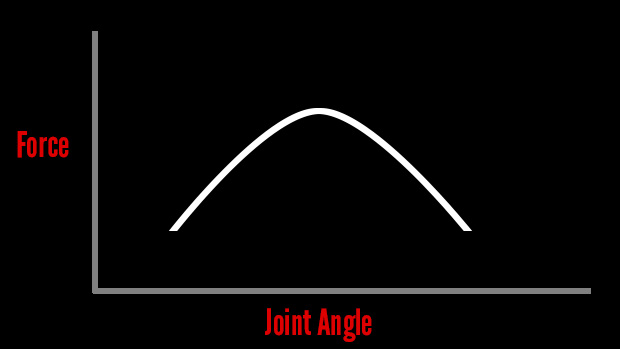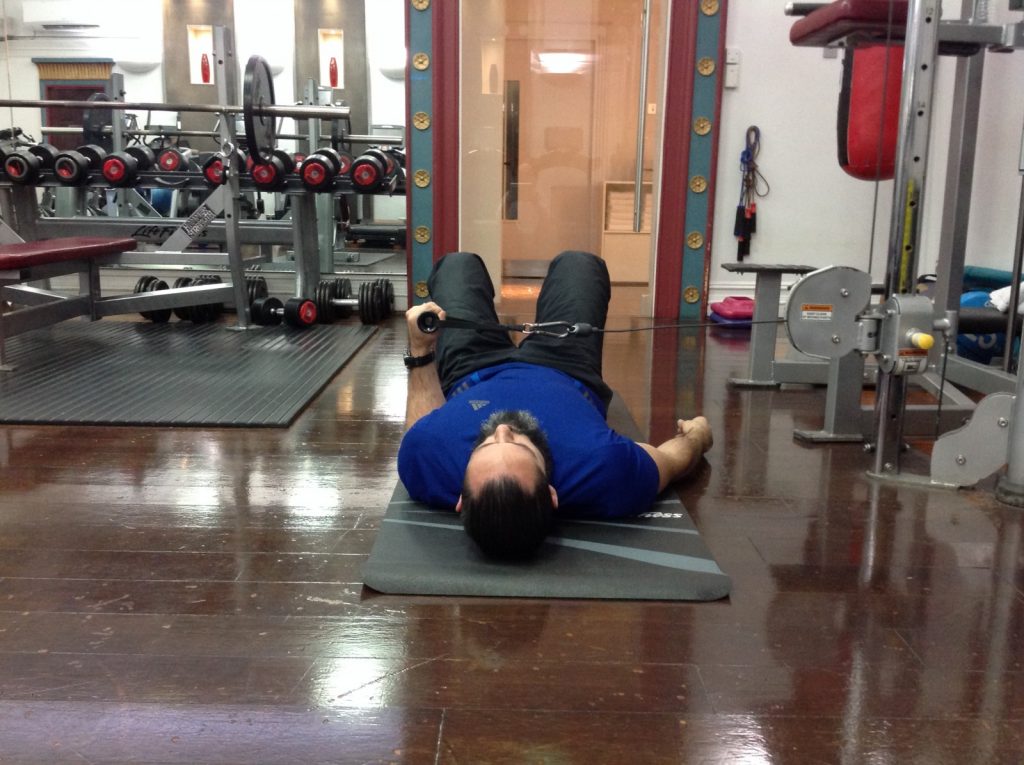In this post we discuss the issues with resistance band exercises for shoulder injury rehab and give you some more effective alternatives.
If you’ve been to see a rehab professional for a shoulder issue, you’ve probably been given an exercise that uses a resistance band of some type.
The bands themselves come in various colours according to the amount of resistance they provide. This varies from very little, right through to extremely difficult to stretch.
What they all have in common is the more you stretch them, the more resistance they offer.
Let’s take an exercise to illustrate the effect and the potential issue with this.

If you’ve been diagnosed with a rotator cuff injury then I’m certain you’ve been recommended the exercise above.
What you’ll no doubt have noticed is that the last part of the exercise is the most difficult no matter which strength of band you’re using.
The only difference will be exactly which part of the range the exercise begins to get difficult. And then how much of the range you’re able to complete as a result.
There are several problems with this type of resistance profile. The first is that it doesn’t match that of your external shoulder rotators.
Where muscles are strong and weak

Muscles are typically strongest in their mid range position and weaker at either end of their range.
So here you have an exercise that gets more difficult in precisely the range where you are weakest.
The exercise will feel something like this… Very easy I could do this all day. Still easy pass me a cup of tea. Nothing going on so I’ll have a biscuit as well. Oh a little bit of resistance, quickly followed by damn that’s hard!
What this achieves in terms of improving the strength of the target muscles is negligible. There is precisely zero challenge in the muscle’s lengthened position. Very little where the muscle is strongest and a very large challenge where the muscle is weakest.
Understanding the challenge is a challenge with resistance bands
Not only that it’s extremely difficult to gauge exactly what that challenge represents in terms of a consistent number.
In this paper which involved the exercise mentioned above, the researchers found that changing the starting length of the band resulted in double the amount of force.
That’s a huge difference and difficult to monitor.
Additionally, resistance bands are known to deform after a specific number of stretch cycles. Meaning that after a while they will provide anywhere between 5 and 15% less resistance no matter what strength they were to begin with.
This means it’s very difficult to assess what the actual challenge to the muscles is. It’s therefore impossible to accurately monitor the load as you would with a resistance training machine for example.
Alternatives to resistance band exercises for shoulder injury rehab

The image above shows the mid range position of a cable machine version of the resistance band exercise.
This exercise provides a more favourable resistance profile to your external shoulder rotators and also reduces the challenge on your trunk.
In addition the floor provides you with an awareness of exactly where your shoulder blades are. This enables you to ensure the motion is primarily occurring at your glenohumeral joint.
If you’d like more effective exercises for the rotator cuff you’ll find this post useful.
Summary
Like with strength training but perhaps more so, successful outcomes in injury rehab require an understanding of the forces being applied.
It’s these forces that will determine the adaptation you are seeking to stimulate in order to get better.
Resistance bands have many uses but understanding their properties and the stimulus they provide is the key to deciding when and if to use them.